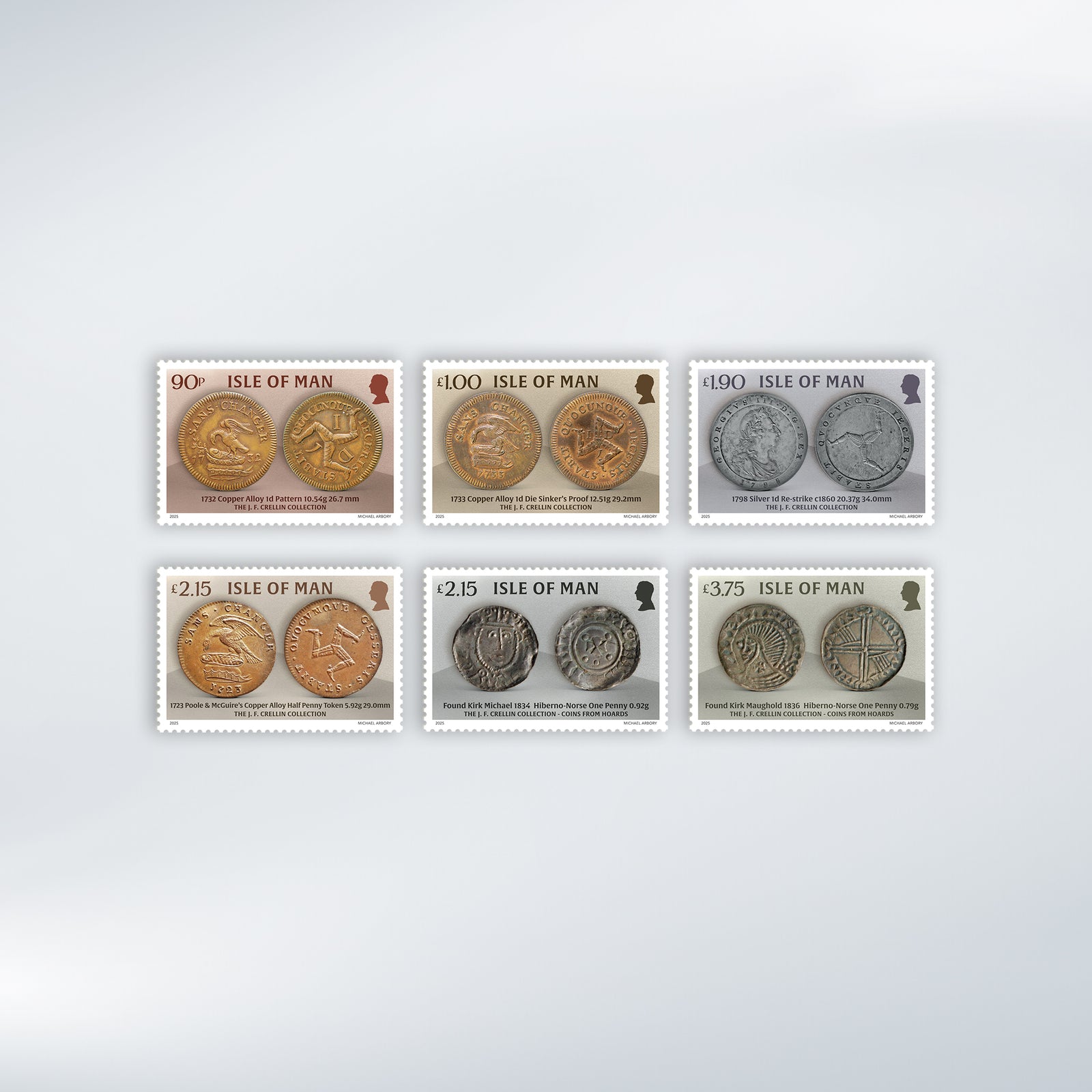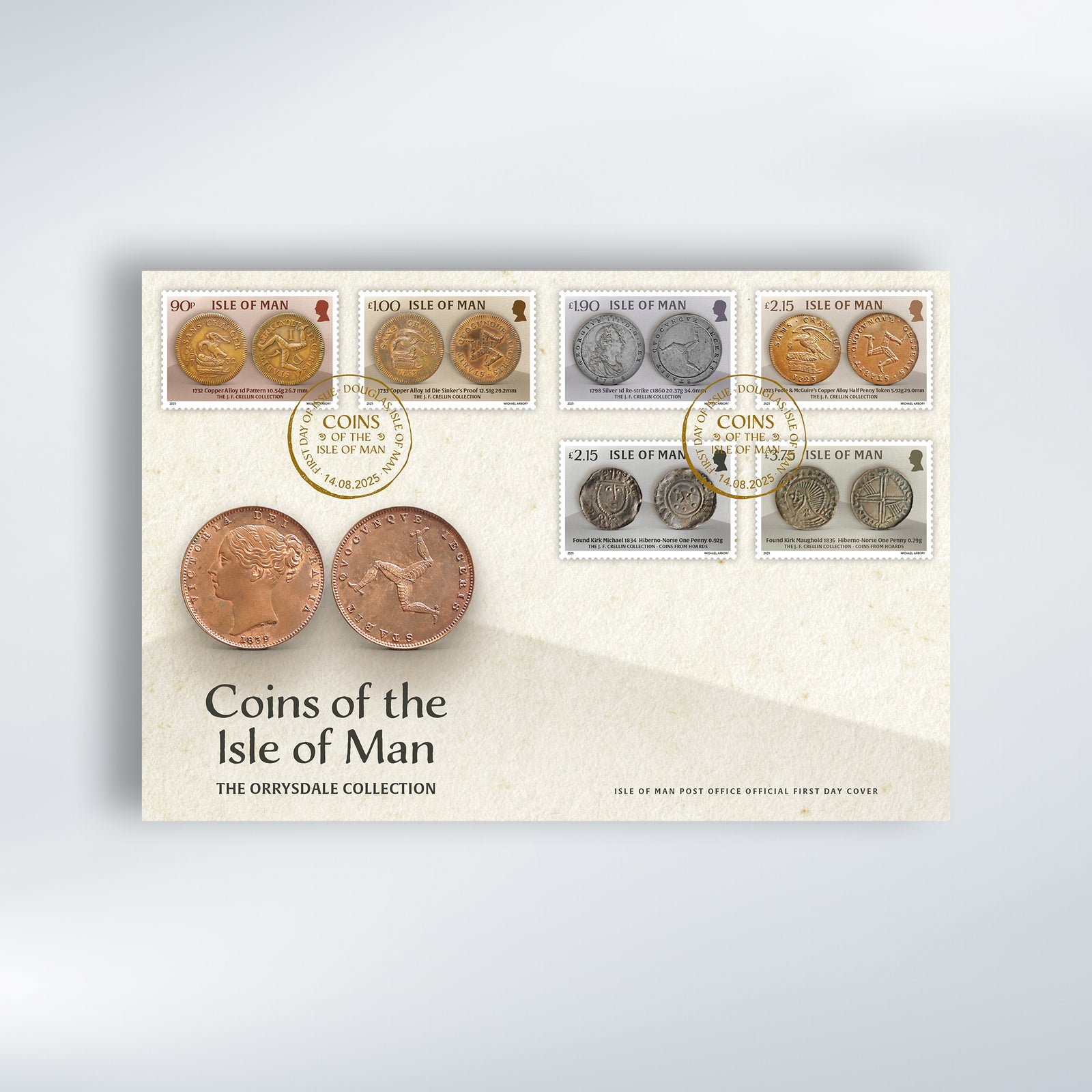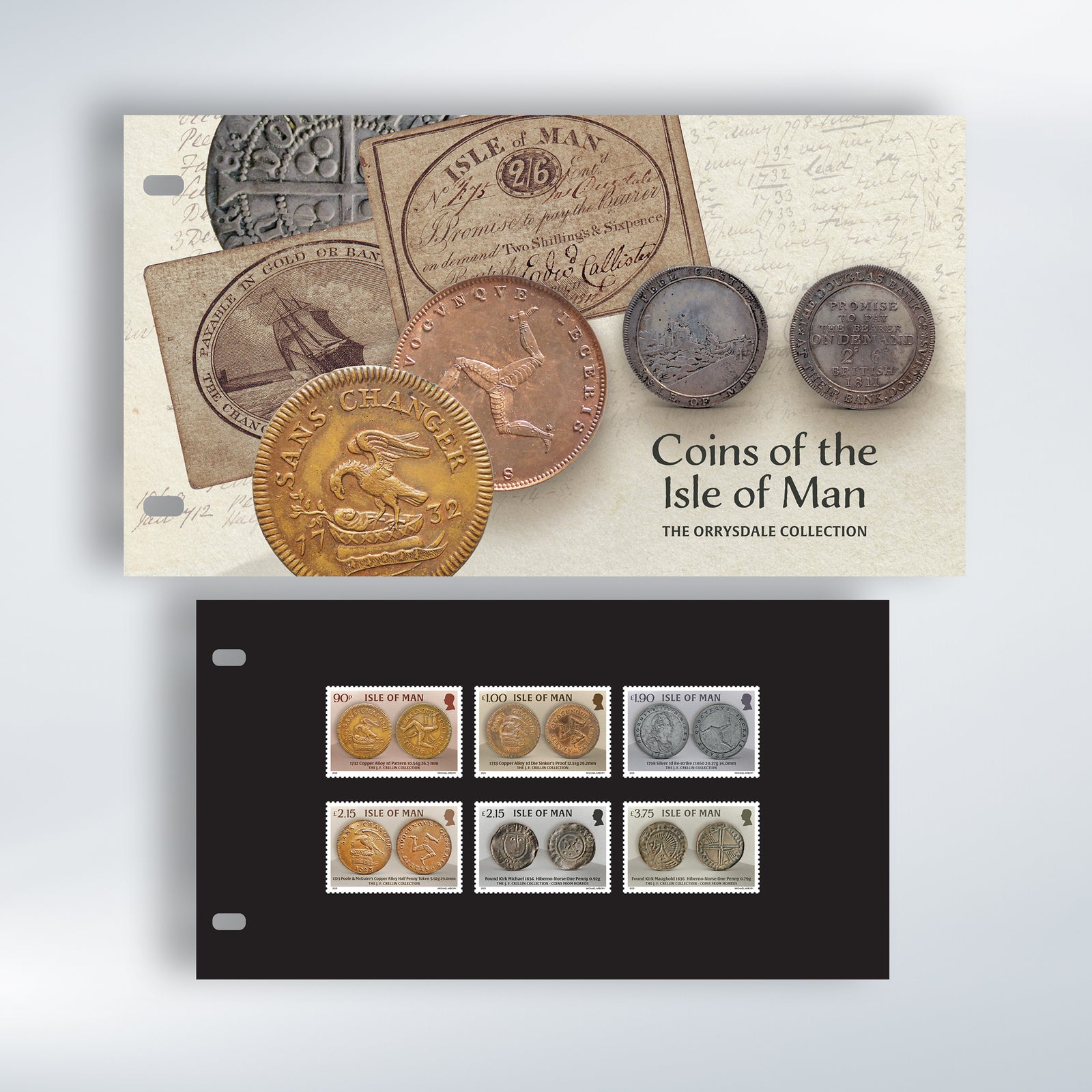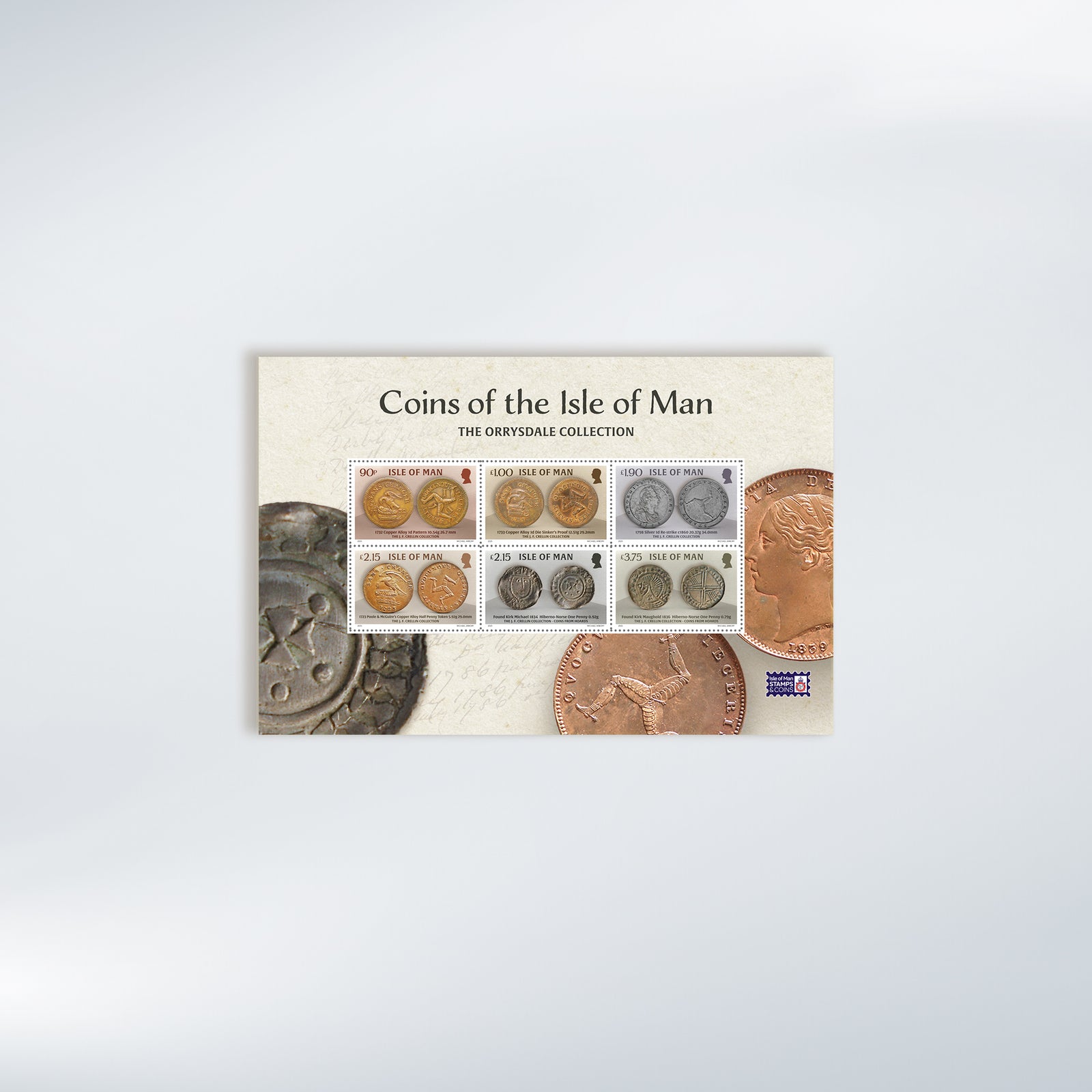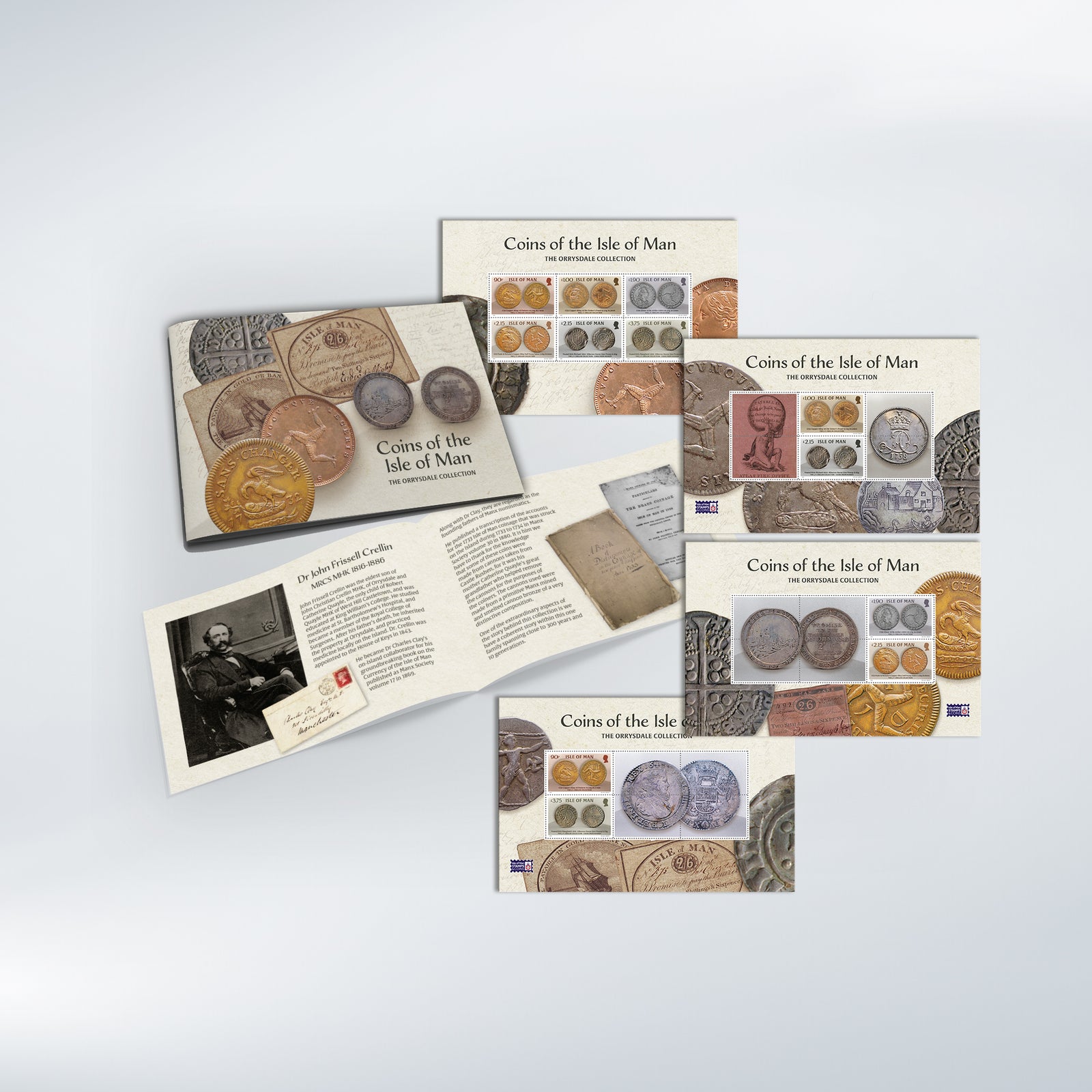The Orrysdale Collection of Dr John Frissell Crellin MRCS MHK 1816-1886
Isle of Man Post Office is pleased to share this important 19th century collection of world coins, tokens and card money with a significant Manx element left untouched since it was formed in the late 1860s.
Dr John Frissell Crellin MRCS MHK 1816-1886
John Frissell Crellin was the eldest son of John Christian Crellin, of Orrysdale and Catherine Quayle, of West Hill Castletown, and was educated at King William's College. He studied medicine at St. Bartholomew's Hospital, and became a member of the Royal College of Surgeons. He inherited the property at Orrysdale and practiced medicine locally on the Island. Dr Crellin was appointed to the House of Keys in 1843.
He became Dr Charles Clay's on-Island collaborator for his book on the Currency of the Isle of Man published as Manx Society volume 17 in 1869. Along with Dr Clay they are regarded as the founding fathers of Manx numismatics. He published a transcription of the accounts for the 1733 Isle of Man coinage that was struck on the Island in Manx Society volume 30 in 1880. His grandfather recounted that his grandfather had helped remove some cannons from Castle Rushen to make these coins.
His Collection
He had a significant collection of coins, tokens and card money. The Collection has been passed down through the family and, excepting one aspect, was virtually intact. Before the Collection was dispersed, the executors allowed the Collection consisting of 1715 objects to be fully catalogued.
The Collection starts with classical Greek and Roman coins - several Greek coins show the Triskelion. There was a good run of the impressive Roman sesterces. English and British hammered and milled coins and tokens were very well represented. The foreign material is more ordinary but the collection contained some rare American coins. The element that was missing was the pre-19th century gold coins that were sold in 1933.
The Manx Element.
The Manx element, mostly formed between 1867 and 1869, can be divided into the following five groups.
Early hammered coins found in the Isle of Man: The Collection contained 17 coins from the Bradda Head 1848, Maughold 1835 (possibly Park Lewellyn 1835 in modern listings), Kirk Michael 1834, Kirk Andreas 1867 and Ballaslig 1861 accumulations. Kirk Michael accumulation contained four unusual Hiberno Norse coins. These coins are now in the Manx National Collections.
The Official Manx issues 1709 to 1839: The need for this coinage was brought about by the 1703 Act of Tynwald that rated 14d Manx = 12d British forcing the Isle of Man to have its own interesting small currency. There are fine examples of a 1732 pattern, a rare 1733 die-sinker's proof and a silver off metal re-strike of the 1798 cartwheel coinage.
The Manx token coinages 1668 to 1831: The highlights being four 1723 tokens issued by Poole, a Liverpool merchant, & McGuire, a Dublin banker. They tried to have an Act of Tynwald passed legalising their coinage but it failed and the coins were quickly suppressed, hence their modern day rarity. There were also two sets of the 1811 silver tokens issued by Littler, Dove & Co. who only traded for two months, again accounting for their rarity.
Card Money issued in the early 19th century: Several of these cards have not been seen since Dr Clay wrote his book and others are not known outside of museums. The most important is an 1811 2/6 card issued by George Quayle, the then owner of the sailing yacht, the Peggy. There were also ten card & banknote printing plates.
Non-Manx Coins: There is a small group of non-Manx coins used in the Isle of Man and specifically mentioned by Acts of Tynwald; St Patrick's Irish coins and Mic Wilson's tokens are commonly found in Manx collections. The most interesting of these is the silver Ducatoon of the Spanish Netherlands, a large coin at 32g and 43mm diameter. The Collection contained the very coin dated 1633 specifically referred by Dr Crellin in his 1880 publication.
The following examples have been selected as standout pieces from The Orrysdale Collection are featured upon the stamps.
Stamp 1: 1732 Copper Alloy 1d Pattern 10.54g 26.7 mm
Stamp 2: 1733 Copper Alloy 1d Die Sinker's Proof 12.51g 29.2mm
Stamp 3: 1798 Silver 1d Re-strike c1860 20.37g 34.0mm
Stamp 4: 1723 Poole & McGuire's Copper Alloy Half Penny Token 5.92g 29.0mm
Stamp 5: Found Kirk Michael 1834 Hiberno-Norse One Penny 0.92g
Stamp 6: Found Kirk Maughold 1836 Hiberno-Norse One Penny 0.79g
